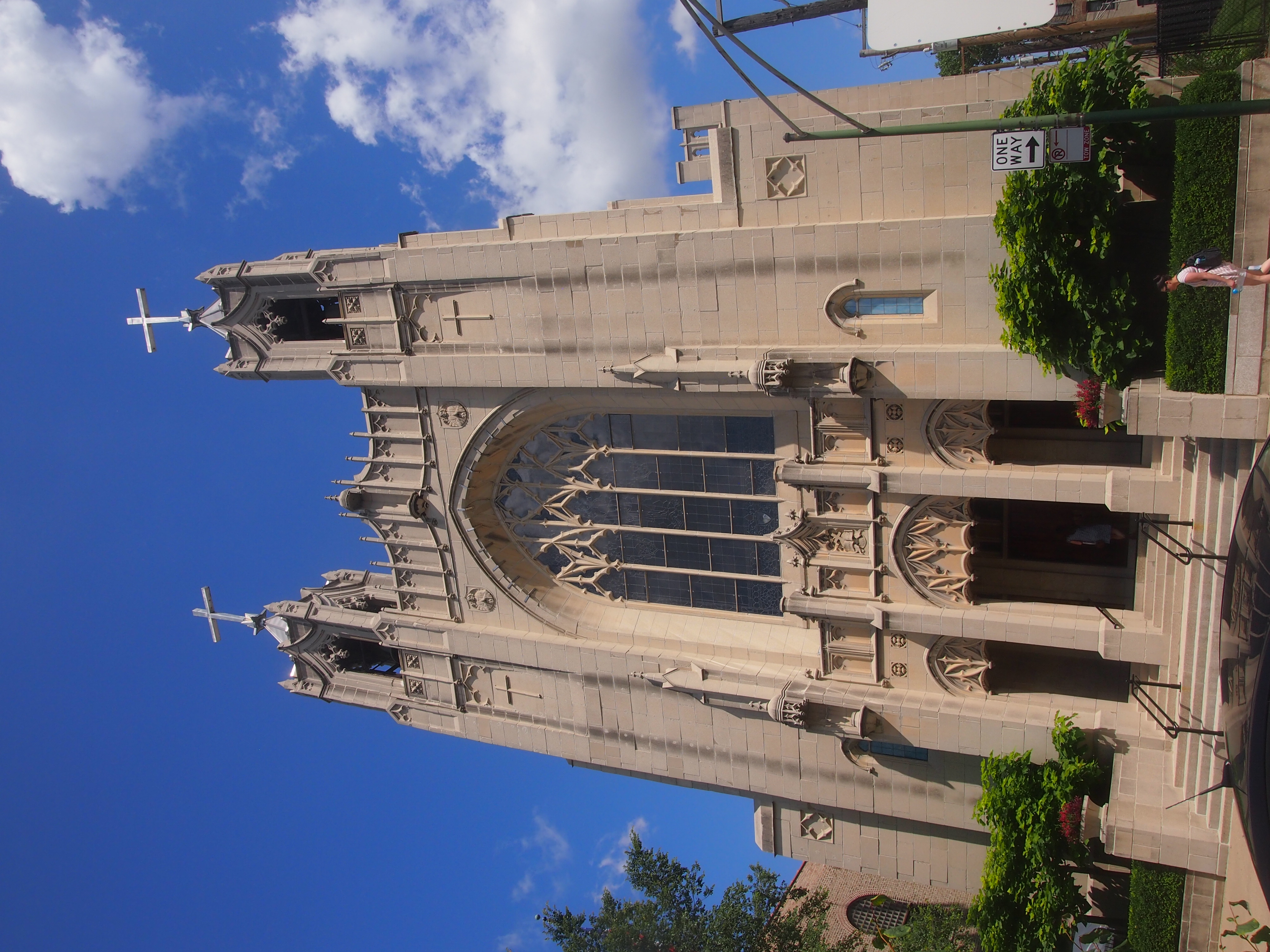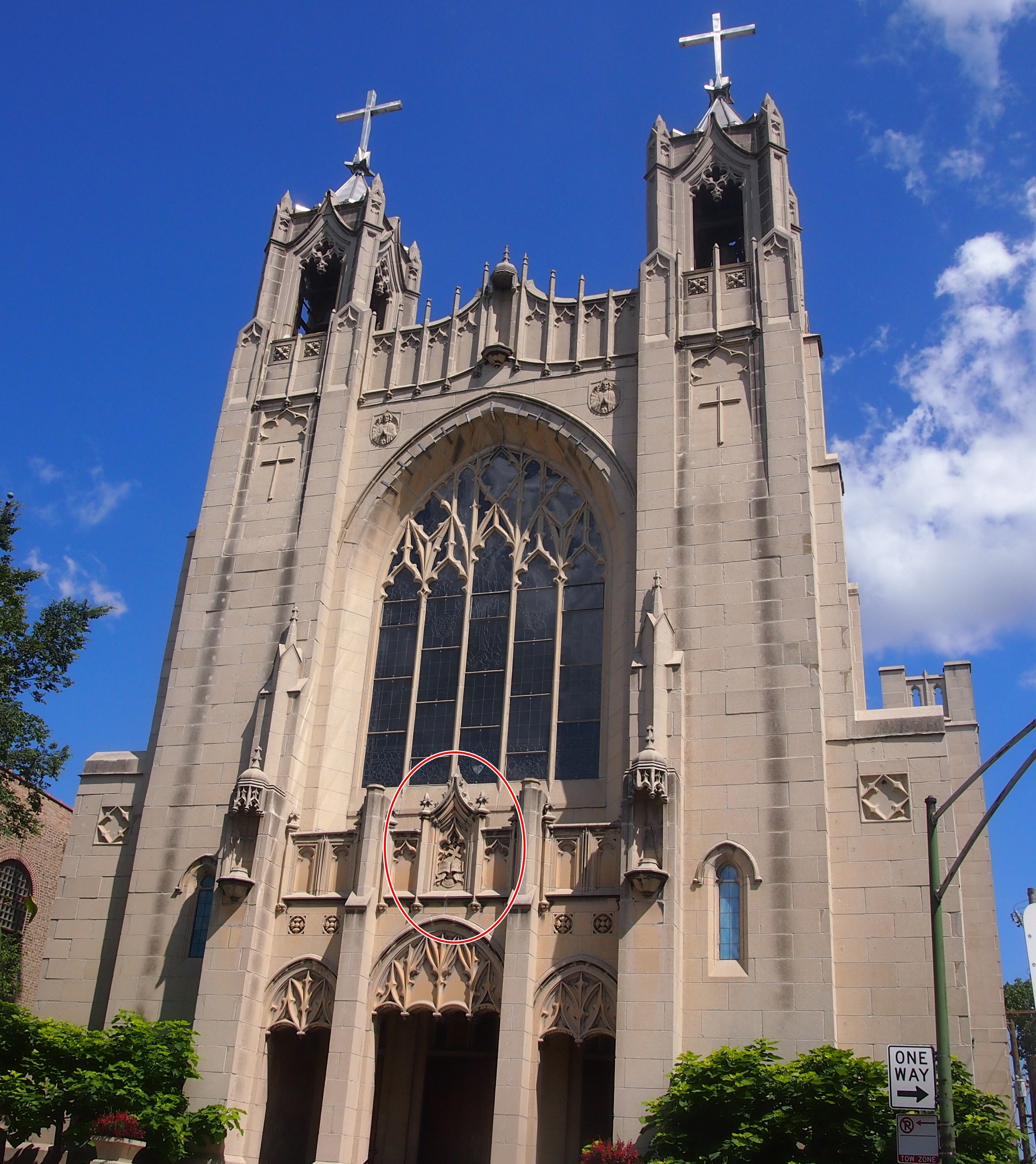In Bucktown on Sunday I visited two churches during my late-morning walk. The first was Covenant Presbyterian Church.
 This is no ordinary large church. It has quite a back story, because the church building used to be the Cathedral of All Saints of the Polish National Catholic Church in Chicago. I’ve visited that organization’s cemetery, out near O’Hare.
This is no ordinary large church. It has quite a back story, because the church building used to be the Cathedral of All Saints of the Polish National Catholic Church in Chicago. I’ve visited that organization’s cemetery, out near O’Hare.
So not precisely Catholic, but pretty close. I am informed that the Polish National Catholic Church is not in full communion with Rome, and hasn’t been since it was formed in the late 19th century. Neither is the separate but similar-sounding Polish Catholic Church, but that church is a member of the Old Catholic Union of Utrecht. The Polish National Catholic Church used to be communion with Utrecht, but isn’t any more — that happened only in the last 10 years or so. Rather, it’s with the Union of Scranton, which also counts the Nordic Catholic Church as a member. Need a scorecard to keep up with the schisms.
Now that that’s cleared up, the following is about what’s now Covenant Presbyterian Church, located at 2012 W. Dickens Ave. The text is from an interesting blog, which I’ll take as solid enough information. The story starts in 1890s Polish Chicago.
“Overwhelmed by the numbers of new immigrants pouring into Bucktown, the Polish-American pastor of St. Hedwig’s brought in Fr. Anthony Kozlowski, a fiery, European-educated young Polish priest to help minister to the parishioners, few of whom spoke English. St. Hedwig’s was under the administration of the Resurrectionists, an order of priests of mostly Polish extraction. …
“Many of the younger immigrants were suspicious of the order, thinking that it was being pressured by the Irish hierarchy that otherwise ran the American church, and the Chicago church in particular.
“Details are thin, but in early 1895, Kozlowski led a revolt against the Resurrectionist pastor, Thaddeus Barzynski, and his brother Joseph Barzynski, that eventually resulted in two-thirds of the St. Hedwig’s congregation quitting the church and following Kozlowski away from governance by the Pope. [They objected to much of Vatican I, it seems.]
“The revolt went critical on February 7, 1895. Kozlowski’s hotheads broke into the St. Hedwig’s rectory, where the Barzynskis had barricaded themselves, and assaulted the priests. The police were called, and found a crowd of 3,000 immigrants milling around the church. When the officers attempted to disperse the crowd, several protesters threw powdered red pepper in their faces. Dozens were injured in the ensuing brawl, and Chicago’s (Irish) Roman Catholic archbishop shut down St. Hedwig’s for several months.
“By that time, the 1,000 or so immigrants who objected to Papal rule had bought land a few blocks away and began built their own church, All Saints Cathedral.”
It took quite a while. Eventually, the congregation tapped John G. Steinbach to design the church. Its cornerstone was laid in 1931, and the church served the breakaway parish for the next 62 years, until the building became too expensive to maintain and was sold to Covenant Presbyterian Church.
“Covenant Presbyterian’s white imitation cement stone and neo-Gothic features distinguish it from other Polish Cathedral-style churches designed by Steinbach and his partner, Henry Worthmann,” writes Amy Korte in Chicago Architecture.
“A carving above the main entrance depicts a book, the sun, a cross, and a palm. Together, these images comprise the emblem of the Polish National Catholic Church, the denomination with which All Saints had affiliated itself. Below these symbols lies the Polish inscription ‘Prawda, Praca, Walka,’ an abbreviation of the denomination’s motto, ‘With truth, work and struggle, we will succeed.’ ”
I noticed that feature, but eager to get out of the sun, I didn’t take any pictures. The inscriptions are here.
I sat at the back of the church for a short spell, taking my seat just as a pair of baptisms were taking place — two baby girls. A delightful thing to chance across, even if you don’t know the families.
